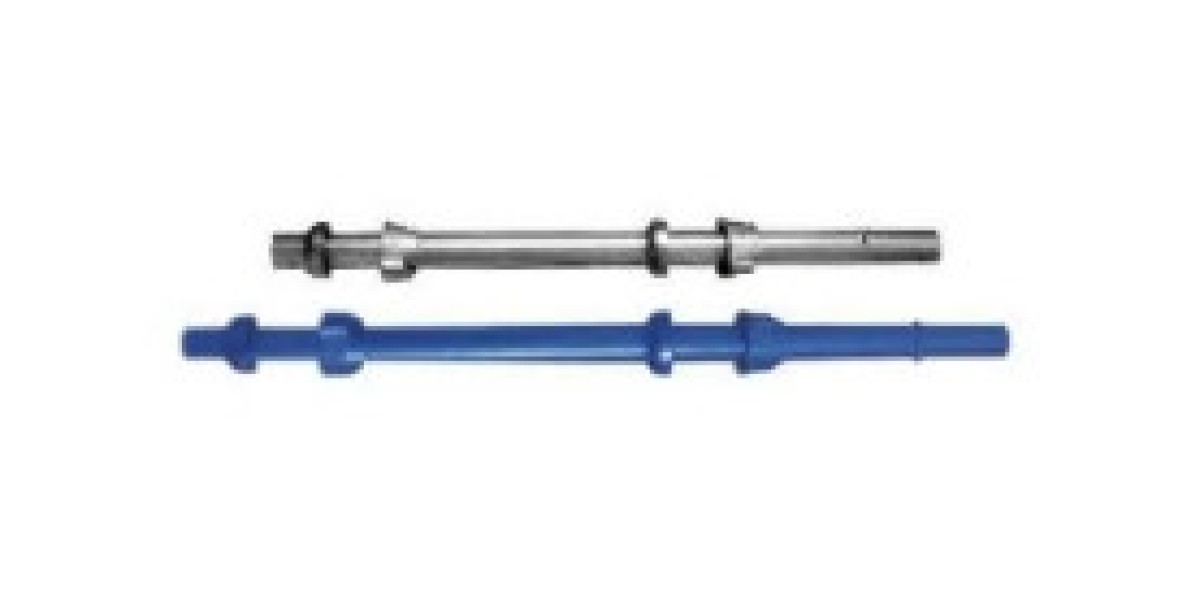Cuplock scaffolding is a versatile and efficient system used in construction projects worldwide. Offering quick assembly, high load-bearing capacity, and flexibility for various structures, cuplock scaffolding stands out as a popular choice for builders. Its unique design with minimal loose components ensures easy setup and dismantling without compromising safety. This type of scaffolding provides stability and support for workers at different heights, making it an indispensable tool on job sites. With its time-saving features and robust construction, cuplock scaffolding streamlines the building process while maintaining reliability and durability.
Overview and Key Components
Key Components
Cuplock scaffolding, a common system in construction, consists of crucial elements for its structure. Vertical standards provide the main support, while horizontal ledgers offer horizontal connections between standards. Diagonal braces enhance stability, preventing lateral movements. steel planks serve as platforms for workers to stand on during construction activities.
Cuplock scaffolding is favored for its quick assembly and impressive load-bearing capacity. The design simplicity allows for fast erection without the need for bolts or nuts. This feature makes it efficient for projects requiring rapid deployment of scaffolding structures.
The versatility of cuplock scaffolding lies in its adaptability to various construction needs due to the interchangeable nature of its components. For instance, if a project requires increased height or different configurations, additional vertical standards and ledgers can be easily added or removed.
Assembly Process
Assembling cuplock scaffolding involves a systematic process that ensures safety and structural integrity throughout the construction project:
Foundation Setup: Begin by laying out the base plates to provide stable support at the bottom.
Vertical Standards Installation: Position the vertical standards on top of the base plates securely.
Horizontal Ledger Placement: Connect horizontal ledgers horizontally between two adjacent vertical standards.
Brace Installation: Attach diagonal braces diagonally across bays to prevent swaying or collapsing.
Steel Plank Placement: Lay steel planks across ledgers as working platforms for laborers.
This step-by-step approach guarantees a sturdy scaffold structure that meets safety regulations and supports workers efficiently throughout their tasks.
Pros:
Quick assembly process
High load-bearing capacity
Versatile adaptability
Cons:
Requires adequate training for safe assembly
Initial investment cost may be higher compared to other types of scaffolding
Specifications and Features
Various Sizes
Cuplock scaffolding comes in multiple sizes ranging from 0.5m to 2m, offering versatility for different construction needs. The availability of various sizes ensures that the scaffolding can be tailored to fit specific project requirements without unnecessary adjustments.
The range of size options allows for flexible usage on projects with diverse height and space specifications, making cuplock scaffolding a practical choice for construction sites where adaptability is crucial.
Unique Cup-Shaped Node
With its distinctive cup-shaped node design, cuplock scaffolding enables quick and secure connection between vertical standards and horizontal ledgers. This feature simplifies the assembly process by allowing components to fit seamlessly together without requiring complicated adjustments or additional tools.
The unique cup-shaped node not only streamlines the setup but also enhances safety by providing a reliable connection point that minimizes the risk of dislodgment during construction activities.
Hot-Dip Galvanized Finish
One of the standout features of cuplock scaffolding is its hot-dip galvanized finish, which offers exceptional surface protection against corrosion and extends the lifespan of the equipment. The galvanization process creates a durable coating that shields the scaffolding from environmental elements, ensuring long-term durability even in challenging conditions.
The hot-dip galvanized finish provides added value by reducing maintenance requirements over time, saving both time and resources while maintaining structural integrity throughout prolonged use.
Types of Cuplock Scaffolding
Standard Cuplock
Standard cuplock scaffolding is primarily used for vertical support in construction projects. This type features vertical standards with cups at fixed intervals, allowing for easy and quick assembly. The standards have top cups that hold the ledgers in place, creating a secure structure. The unique node point connection enables horizontal members to be connected to the vertical ones swiftly.
The standard cuplock system is versatile and can adapt to various heights and configurations on-site. It offers excellent load-bearing capacity due to its robust design, making it suitable for supporting heavy loads during construction activities. Moreover, its modular nature allows for quick adjustments and alterations without compromising structural integrity.
Pros:
Quick assembly
Versatile and adaptable
Strong load-bearing capacity
Cons:
Requires skilled labor for proper installation
Ledger Cuplock
Ledger cuplocks are essential components of cuplock scaffolding systems used primarily for providing horizontal support during construction projects. These ledgers run parallel to the building's facade or structure, connecting the standards vertically through sturdy spigots attached to them securely. By interlocking with other components like transoms and diagonals easily, ledger cuplocks ensure stability and safety on-site.
One key advantage of using ledger cuplocks is their ability to create safe working platforms at different levels efficiently. They contribute significantly to enhancing worker safety by providing secure platforms where workers can move around comfortably while carrying out tasks at height.
Pros:
Ensures stable horizontal support
Facilitates safe working platforms
Enhances worker safety
Installation Guide and Safety Measures
Proper Setup
To begin the installation of cuplock scaffolding, ensure a stable and level starting base. Align the vertical standards correctly to guarantee stability throughout the setup process. This initial step is crucial for the overall safety and effectiveness of the scaffold.
It's essential to inspect all components before assembling them. Check for any damages or missing parts that could compromise the structural integrity of the scaffold. By doing this, you can address any issues beforehand and prevent potential hazards during installation.
Safety Precautions
When working with cuplock scaffolding, prioritize safety by wearing appropriate personal protective equipment (PPE). Equip yourself with helmets, harnesses, and other necessary gear to minimize risks while setting up or dismantling the scaffold. Safety should always be a top priority in construction projects involving elevated work areas.
Regularly inspecting the erected scaffolding is vital to ensure ongoing safety at the worksite. Look out for any signs of damage or loose connections that may have occurred during use. By conducting routine checks, you can identify issues early on and address them promptly before they escalate into serious safety concerns.
Load Capacity and Safety Factor
High Load Capacity
Cuplock scaffolding is known for its high load capacity, supporting between 6 to 8 tons per leg. This robust system can handle heavy loads, making it suitable for various construction projects. The vertical "standards" or upright tubes of cuplock scaffolding are designed to bear substantial weight without compromising safety. For instance, when constructing a multistory building, the scaffold's load-bearing capability ensures stability throughout the structure.
Properly distributing loads across the scaffold is crucial to prevent overloading and maintain structural integrity. By evenly spreading the weight on each level using ledgers and transoms, workers can ensure that the scaffold remains stable and secure during construction activities. Understanding the maximum load capacity of cuplock scaffolding helps project managers plan efficiently by determining how much weight each section can support.
Safety Factor Considerations
In terms of safety measures, cuplock scaffolding typically follows a strict guideline with a safety factor set at 2.5 times the working load limit. This means that even if a particular section is expected to carry a certain amount of weight during construction, there is an additional margin built-in for extra security purposes. For example, if a specific area has a working load limit of 4 tons per leg, the safety factor would require it to withstand up to 10 tons before reaching its breaking point.
The use of top cups and bottom cups in cuplock scaffolding plays an essential role in maintaining stability while ensuring worker safety on-site. These components help secure horizontal members like ledgers onto vertical standards firmly, preventing any slippage or movement that could compromise the entire structure's integrity.
Pricing Factors and Considerations
Factors Affecting Cuplock Scaffolding Prices
Cuplock scaffolding prices are influenced by several key factors. Material quality, such as the grade of steel used, significantly impacts the cost. The size and quantity of the scaffolding needed for a project also play a crucial role in determining the final price. The rental duration can affect pricing, with longer rental periods often resulting in lower costs per day.
When considering cuplock scaffolding options, it's essential to evaluate your specific project requirements carefully. Understanding how much scaffolding is needed, for how long, and at what quality level is vital in making an informed decision about pricing. By assessing these aspects upfront, you can better align your budget with the expected costs of renting or purchasing cuplock scaffolding.
Choosing a Supplier and Comparing Prices
Selecting a reputable cuplock scaffold provider is paramount when factoring in pricing considerations. Beyond just looking at prices, consider supplier reputation for delivering high-quality equipment promptly and reliably. By opting for established suppliers known for their reliability and service quality, you can ensure that you receive value for money while minimizing potential risks associated with substandard equipment.
Comparing prices from multiple suppliers is an effective strategy to find competitive rates without compromising on quality or service standards. Requesting quotes from different providers allows you to make an informed comparison based on not only pricing but also additional services offered, such as delivery options or after-sales support. This approach enables you to identify the most cost-effective option that meets both your budget constraints and project requirements effectively.
Node Locking Devices and Diagonal Braces
Securing Connections
Node locking devices, like captive wedges, play a crucial role in ensuring the stability of cuplock scaffolding. These devices secure the connection between vertical standards and horizontal ledgers. Proper installation and tightening of these locking devices are vital for maintaining a safe working environment. When these components are not securely fastened, there is an increased risk of structural instability.
Diagonal braces also contribute significantly to the overall stability of cuplock scaffolding systems. These braces are essential as they prevent lateral movement, enhancing the rigidity of the structure. By connecting vertical standards with horizontal members through diagonal braces, the entire system becomes more robust and resistant to forces that may cause it to sway or collapse.
Importance of Installation
Ensuring that node locking devices are correctly positioned and tightened is paramount for maintaining a secure scaffold structure. If these elements are not properly installed, they can compromise the integrity of the entire system, posing serious safety hazards to workers on-site.
Similarly, proper installation and positioning of diagonal braces are critical for reinforcing the scaffolding's strength against external forces such as wind or equipment vibrations. Without adequately secured diagonal braces, there is an increased risk of swaying or collapsing due to lateral pressures on the scaffold.
Applications and Uses in Construction
Versatile Application in Various Projects
Cuplock scaffolding finds extensive use across a wide range of construction projects, from building residential houses to large industrial structures. It is a versatile system suitable for both indoor and outdoor tasks, making it ideal for activities like painting, plastering, brickwork, and installing facades. The adaptability of cuplock scaffolding allows it to be utilized in diverse settings within the construction industry.
The flexibility of cuplock scaffolding makes it highly sought after by builders due to its ability to cater to different project needs effectively. For instance, when constructing a multi-story commercial building, cuplock scaffolding can be adjusted easily by adding or removing components such as steel planks and transoms based on the specific requirements at each level. This adjustability streamlines the construction process by providing a stable platform for workers while ensuring their safety.
Enhanced Safety Measures for Workers
One crucial aspect that sets cuplock scaffolding apart is its focus on construction safety, especially concerning workers' well-being during various tasks. The design of this system incorporates features like hot-dip galvanization which enhances durability and protects against corrosion when used outdoors or exposed to different weather conditions. By prioritizing worker safety through robust materials like hot-dip galvanized steel components, cuplock scaffolding ensures a secure working environment at elevated heights.
Moreover, the systematic assembly method of cuplock scaffolding minimizes potential hazards on-site compared to traditional scaffold systems with loose fittings or complex connections that can pose risks during assembly or disassembly processes. This streamlined approach not only improves efficiency but also reduces accidents related to unstable platforms or structural failures commonly associated with other scaffold types.
Advantages Over Traditional Scaffolding Systems
Faster Assembly and Dismantling
Cuplock scaffolding has a significant edge over traditional scaffolding systems like tube and coupler scaffolding in terms of speed. The unique node design of cuplock eliminates the need for nuts and bolts, making the assembly process quicker. For instance, when compared to setting up tube and coupler scaffolding for a project, cuplock can be erected much faster due to its innovative locking mechanism.
Cuplock's swift assembly is particularly advantageous in time-sensitive projects where construction deadlines are tight. This efficiency translates into cost savings as labor hours are reduced during setup and dismantling. As an example, in high-rise building projects that require frequent adjustments to scaffold construction, cuplock's rapid installation can significantly impact overall project timelines.
Enhanced Safety Features
One of the primary advantages of cuplock scaffolding is its superior safety features compared to traditional systems. The secure interlocking system ensures stability during construction activities, reducing the risk of accidents on-site. Cuplock's high load-bearing capacity provides a sturdy platform for workers at various heights.
The enhanced safety offered by cuplock makes it a preferred choice for projects where worker protection is paramount. In scenarios involving heavy loads or complex architectural structures requiring robust support structures, cuplock scaffolding offers peace of mind regarding stability and reliability.
Closing Thoughts
In conclusion, cuplock scaffolding proves to be a versatile and efficient system for various construction needs. With its robust design, ease of assembly, and high load-bearing capacity, it offers a safe and reliable solution for both small and large-scale projects. The diverse applications, cost-effectiveness, and time-saving features make it a preferred choice in the construction industry.
For those considering scaffolding options, exploring cuplock scaffolding further could lead to enhanced project efficiency and safety. Understanding the specifications, installation procedures, and advantages outlined in this guide can empower individuals to make informed decisions. By prioritizing safety measures and selecting the right type of cuplock scaffolding for specific project requirements, one can ensure smooth operations on-site while maintaining a secure working environment.
Frequently Asked Questions
What are the key components of cuplock scaffolding?
Cuplock scaffolding consists of vertical standards with cup joints, horizontal ledgers, diagonal braces, steel planks or platforms, and adjustable base jacks for leveling.
How does cuplock scaffolding differ from traditional systems?
Cuplock scaffolding offers rapid assembly due to its unique locking mechanism. It provides increased load-bearing capacity and greater flexibility in terms of height adjustments compared to traditional scaffold systems.
What safety measures should be considered during the installation of cuplock scaffolding?
Ensure proper training for workers on assembly procedures. Conduct regular inspections for any signs of wear or damage. Always follow manufacturer guidelines and industry best practices to maintain a safe working environment.
In what construction applications can cuplock scaffolding be used?
Cuplock scaffolding is versatile and suitable for various construction projects such as building maintenance, bridge construction, industrial facilities, and high-rise structures due to its robust design and adaptability.
What advantages does cuplock scaffolding offer over conventional systems?
Compared to traditional scaffold systems, cuplock scaffolding provides faster erection times, higher load-bearing capacity, enhanced safety features like node locking devices & diagonal braces. Its modular design allows for easy customization based on project requirements.
Naijamatta is a social networking site,
download Naijamatta from Google play store or visit www.naijamatta.com to register. You can post, comment, do voice and video call, join and open group, go live etc. Join Naijamatta family, the Green app.
Click To Download


